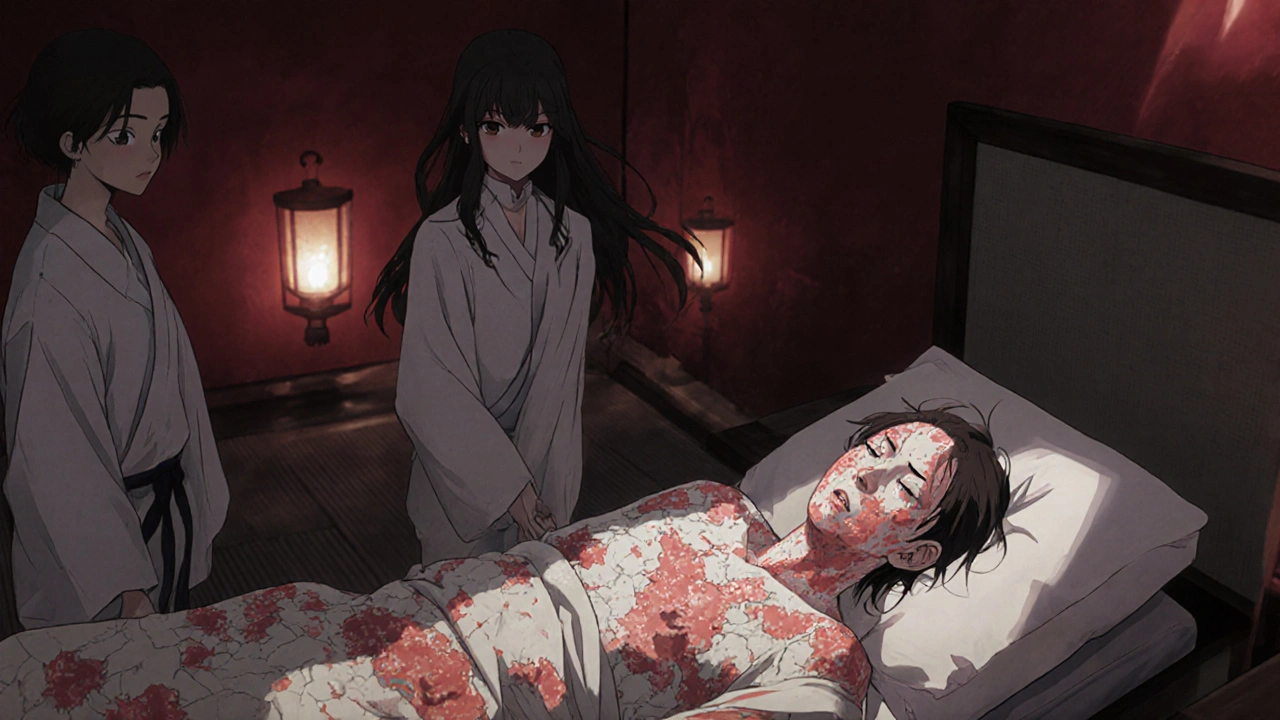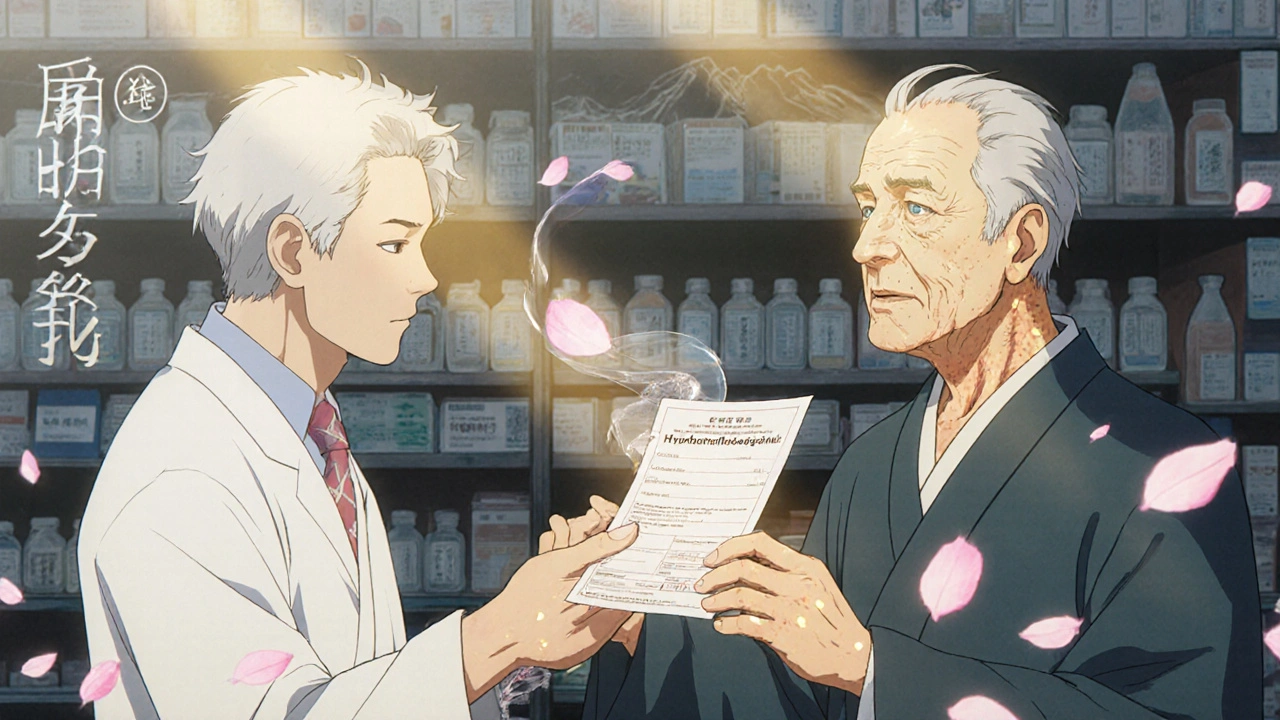Skin Rashes and Medication-Induced Dermatitis: What Patients Should Know

Drug Rash Severity Checker
Is This a Medical Emergency?
This tool helps identify if your rash requires immediate medical attention. It's not a diagnosis tool.
Your risk assessment will appear here
It’s not rare to wake up with a red, itchy rash and wonder: did my medicine cause this? You’re not imagining it. About 2 to 5% of all drug reactions show up on your skin. For many, it’s just a mild annoyance. For others, it’s a warning sign that something serious is happening inside the body.
How Do Medications Cause Skin Rashes?
Not all drug rashes are allergies. Some are simple toxic reactions. Others involve your immune system going into overdrive. The most common type - making up 60 to 70% of cases - is a morbilliform rash. It looks like measles: small, flat, red spots that start on your chest or back and spread outward. It usually shows up 4 to 14 days after starting a new medication. Penicillin, sulfa drugs, and antiseizure meds like carbamazepine are top triggers.
Then there are the delayed reactions. These can take weeks to appear. One serious type is DRESS - Drug Reaction with Eosinophilia and Systemic Symptoms. It doesn’t just hit your skin. It can swell your liver, kidneys, or lungs. You might get a fever, swollen lymph nodes, and high white blood cell counts. Antiepileptics like phenytoin and lamotrigine, allopurinol for gout, and certain antibiotics are the usual suspects. DRESS happens in about 1 in every 1,000 to 10,000 people who take these drugs.
And then there are the fast ones. Hives that pop up within minutes? That’s often an IgE-mediated allergy. It’s your body releasing histamine like a fire alarm. Swelling around your lips or throat? Trouble breathing? That’s an emergency. Don’t wait. Call for help.
What Do Different Rashes Look Like?
Not every red patch is the same. Here’s what to watch for:
- Morbilliform (measles-like): Small red spots, symmetrical, starts on trunk. Itchy but not painful. Most common. Usually harmless if caught early.
- Urticaria (hives): Raised, red, itchy welts that come and go within hours. Often linked to penicillin, NSAIDs like ibuprofen, or opiates.
- Nummular dermatitis: Coin-shaped, dry, scaly plaques. Often mistaken for eczema. Can be triggered by antibiotics, diuretics, or antifungals.
- Stevens-Johnson Syndrome (SJS) / Toxic Epidermal Necrolysis (TEN): Blisters, skin peeling off like a burn. Mucous membranes in mouth, eyes, or genitals affected. This is life-threatening. Mortality: 5-15% for SJS, up to 35% for TEN.
- Photosensitivity: Rash only on sun-exposed skin. Caused by doxycycline, ciprofloxacin, or hydrochlorothiazide. Feels like a bad sunburn, even after brief sun exposure.
One thing to remember: if you have a viral infection - like Epstein-Barr or HIV - and you’re given an antibiotic, your risk of a severe rash jumps 5 to 10 times. Same goes if you’re on chemotherapy or have a weakened immune system. Your body is already stressed. A new drug can push it over the edge.
Which Medications Are Most Likely to Cause Rashes?
Some drugs are notorious. Here’s who’s on the list:
- Penicillins: Cause 10% of all drug rashes. 80% of severe allergic reactions come from these.
- Sulfonamides: Like Bactrim. Responsible for 8% of reactions. High risk for DRESS and SJS.
- Anticonvulsants: Carbamazepine, phenytoin, lamotrigine. Linked to DRESS and SJS. Genetic testing (HLA-B*1502) can predict risk in Southeast Asian populations.
- Allopurinol: Used for gout. Causes DRESS and SJS. HLA-B*5801 gene test can prevent this in Han Chinese patients.
- NSAIDs: Ibuprofen, naproxen. Cause non-allergic rashes in 25% of cases. Often confused with allergies.
- Chemotherapy drugs: High risk for severe reactions. Often cause widespread rashes, sometimes with fever.
- Diuretics: Hydrochlorothiazide is a common trigger for photosensitivity rashes.
And here’s a surprise: 15% of people who say they’re allergic to penicillin aren’t. Skin testing today can identify true allergies with 95% accuracy. Many people avoid penicillin unnecessarily - and end up on stronger, costlier, or riskier antibiotics.

When Should You Worry?
Most drug rashes are annoying but not dangerous. They fade within 1 to 2 weeks after stopping the drug. But some need urgent care. Look for these red flags:
- Blisters or skin peeling (like a burn)
- Sores in your mouth, eyes, or genitals
- High fever (over 38.5°C)
- Swelling of face, lips, or tongue
- Difficulty breathing or swallowing
- Widespread rash covering more than 10% of your body
If you have any of these, go to the ER. Don’t wait. SJS and TEN can kill. DRESS can damage your organs. Early treatment saves lives.
What Should You Do If You Get a Rash?
Don’t panic. Don’t stop your meds on your own - especially if it’s for epilepsy, high blood pressure, or heart disease. Stopping suddenly can be deadly.
Do this instead:
- Take a photo of the rash. Note the date and what meds you started recently.
- Call your doctor. Don’t wait for an appointment. Many clinics have nurse lines or urgent advice services.
- Write down every medication - prescription, over-the-counter, supplements, herbal products. Even the ones you take once a month.
- Don’t use random creams or antihistamines unless advised. Some can make things worse.
For mild rashes, your doctor might suggest:
- Lukewarm baths with fragrance-free cleansers
- Moisturizing within 3 minutes of bathing
- Over-the-counter hydrocortisone 1% cream twice a day
- Oral antihistamines like cetirizine for itching
For severe cases, you may need:
- Prescription steroid creams like clobetasol 0.05%
- Oral prednisone at 0.5-1 mg per kg per day
- Hospitalization for SJS, TEN, or DRESS

Can You Prevent This?
You can’t always stop it - but you can reduce your risk.
- Know your meds. Ask your doctor or pharmacist: “Can this cause a skin reaction?”
- Keep a list of every drug you’ve ever had a reaction to - even if it was years ago.
- If you’re prescribed a new drug, especially an anticonvulsant or allopurinol, ask if genetic testing is available for your ethnicity.
- Use sun protection if you’re on doxycycline, ciprofloxacin, or hydrochlorothiazide.
- Be extra careful if you’re over 65. People on five or more medications have a 35% lifetime risk of a drug rash. That’s not rare - it’s expected.
And if you’ve had a serious reaction before, get a medical alert bracelet. It could save your life if you’re ever unconscious in an emergency.
What Happens After the Rash Is Gone?
Even if the rash clears, the story isn’t over. You need to know what caused it - and avoid it forever.
Some reactions, like mild morbilliform rashes, might not be true allergies. You might be able to take the drug again later - but only under strict medical supervision.
For true allergies or severe reactions like SJS or DRESS, you’ll likely need to avoid that drug - and sometimes others in the same class - for life. Your doctor may refer you to an allergist for testing. Skin tests or blood tests can confirm if you’re truly allergic.
And if you’ve had DRESS, you may need long-term follow-up. Your liver, kidneys, or thyroid might have been damaged - even if you feel fine now.
Many people don’t realize that a rash from a drug can mean you’re now allergic to similar drugs. For example, if you reacted to penicillin, you might also react to amoxicillin or cephalosporins. Your doctor will help you navigate that.
Final Thoughts
Drug rashes are common. Most are harmless. But some are silent alarms - warning you that your body is under attack. The key isn’t fear. It’s awareness.
If you notice a new rash after starting a medication, pay attention. Don’t ignore it. Don’t assume it’s just “allergies.” Don’t wait to see if it gets worse.
Take a photo. Write down your meds. Call your doctor. That’s all it takes to turn a scary rash into a manageable problem - or, in rare cases, to save your life.
